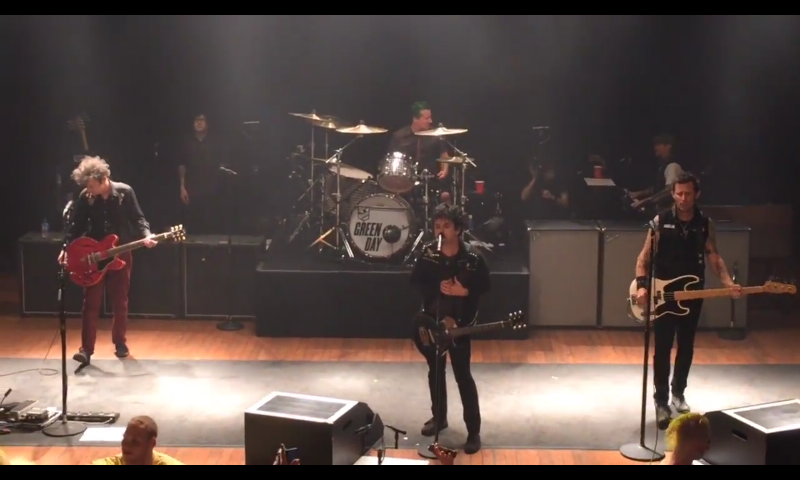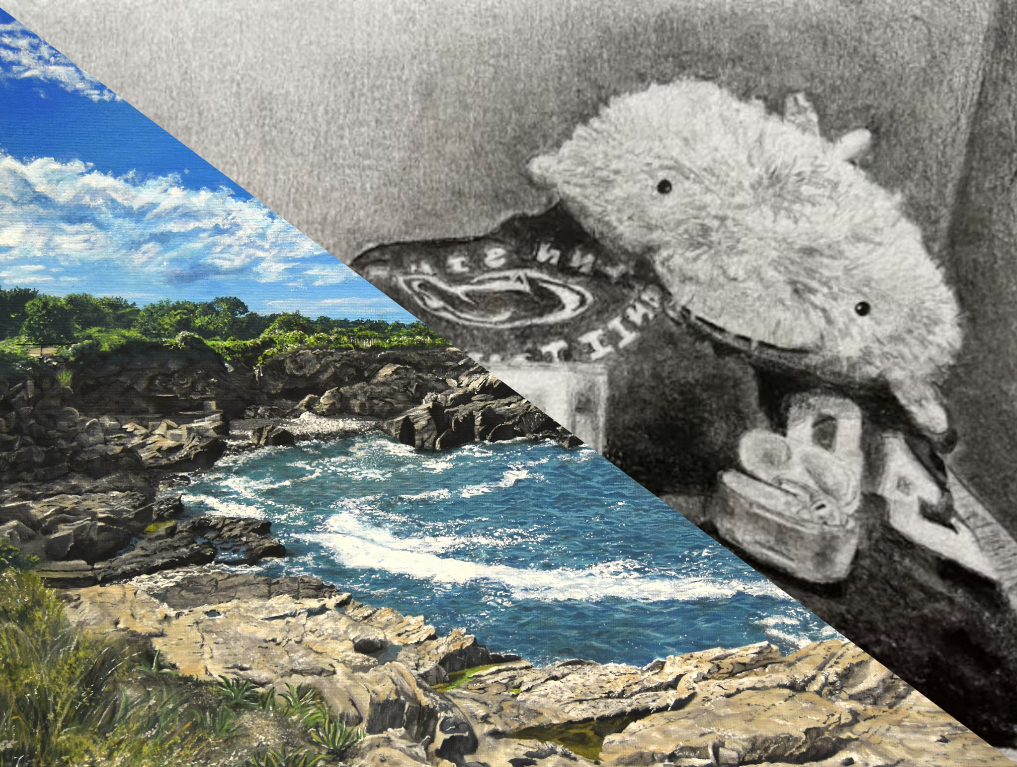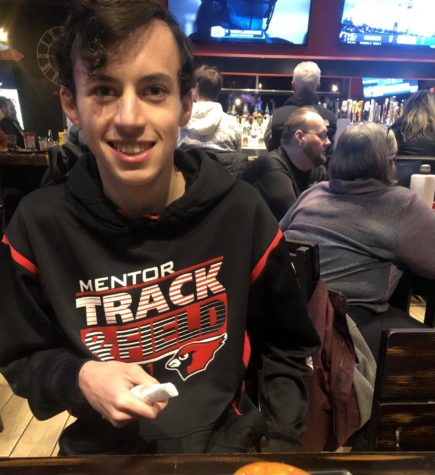Green Day – one of the best known pop punk bands in America today, and often credited for helping to bring the genre into the mainstream and influence acts in a similar vein. Green Day have left their mark on pop culture ever since their rapid rise to fame in the 1990s. Through their decade-spanning career, they have released a great amount of music and many songs that have become must-listens in pop punk and rock music as a whole. In order to commemorate the 30th anniversary of their breakout album, “Dookie,” the 20th anniversary of their mid-career chart topper “American Idiot,” and the release of their brand-new album “Saviors,” we will take a look into a history of the band’s music, from where they came from to where they are now. Let’s begin.
Introduction/Formation
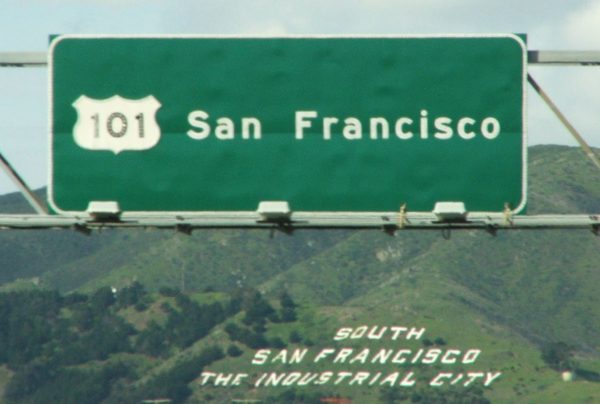
https://creativecommons.org/licenses/by-nc-nd/2.0/
Green Day’s initial members would come together within the San Fransisco Bay Area of California, where residents Billie Joe Armstrong and Mike Dirnt would form a band named Sweet Children with bassist Sean Hughes and drummer Raj Punjabi in 1987. One of the most notable places the group would play in was 924 Gilman Street, a club in Berkley where many independent punk bands at the time would perform to work on their sound. After a short time, Hughes and Punjabi would leave the band, their parts being taken by Dirnt and newcomer John Kiffmeyer (also known as Al Sobrante) respectively. The band would be signed to Lookout! Records, under which they would release their first EP (“1,000 Hours”) and album (“39/Smooth”) under the new name “Green Day.”
“39/Smooth,” released in 1990, is a project which showcased Green Day’s potential at an early stage. The album pairs catchy and fast-paced guitar riffs with a knack for lyrical melody that shone through the more raw and rough-around-the-edges style of production the band was working with. Emotionally charged highlights such as “I Was There” show the band’s ability to hit a more personal core through the relative messiness. Themes of coming of age, yearning for love, and loneliness would pervade the album, and 39/Smooth would establish the punk rock sound Green Day would hone in on, and even experiment with, as they furthered their career.
1990s/Rise to Fame
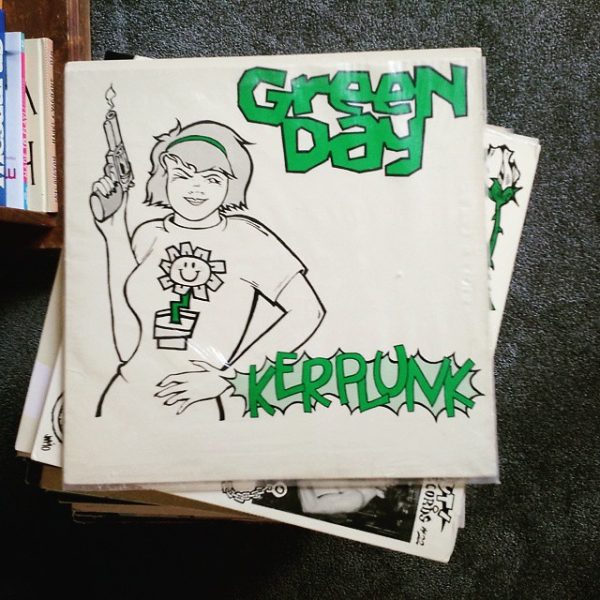
https://creativecommons.org/licenses/by/2.0/
After the release of “39/Smooth,” Kiffmeyer would leave the band in order to go after a college education, though he would work as a sort of manager for the band’s next album. Tré Cool, a drummer from indie band The Lookouts, would fill in for the band and eventually become their new permanent drummer. The band, with its new lineup, would release their second album, “Kerplunk!” in 1991. With this record, the band would further focus in on their more rebellious side, with a new apparent pessimistic tinge to their songwriting. The potential they displayed on “39/Smooth” is still present, and the band keep the fast-paced punk sound their debut established, but Kerplunk! shows the band further coming into their own as a group. Songs such as “2,000 Light Years Away,” “Christie Road,” and “One of My Lies” demonstrate the band’s continuing knack for fun and catchy melodies, and “No One Knows” shows their more emotionally resonant side as well. However, the group was still working with a more rough sound, having self-produced “Kerplunk” and “39/Smooth” with producer Andy Ernst, and they were still considered more of an indie band. Both of these would soon change.
With “Kerplunk!” having sold 10,000 album-equivalent units on release day, and later selling millions worldwide, the band was clearly becoming a larger force in the Bay Area scene. The momentum building behind the band seemed it would not allow for them to remain independent much longer. A bidding war between record labels would soon break out for Green Day, after which the band would move to Reprise Records, and they would begin to work with producer Rob Cavallo. The band was now part of a major label, meaning their status had changed greatly. Many would consider the band “sellouts” from this point, since many original fans felt the band had put their creativity and artistry at a lower priority than sales and airplay by signing to Reprise, a concept they found disrespectful. This leap to a major label would have been controversial for any indie punk band of the time, not just Green Day. The group was even banned from playing at 924 Gilman Street for this decision, since the club was, after all, only for independent artists. However, what soon followed would bring the band to an entirely new level of fame.
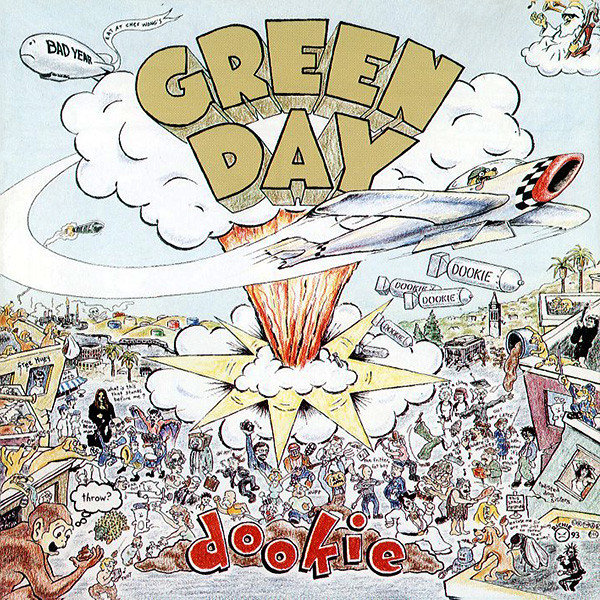
In 1994, Green Day would release their third project, their major-label debut, and one of the most famous albums in pop-punk and punk rock history, “Dookie.” So maybe the risk paid off. With “Dookie,” Cavallo’s production creates a more clean sound for the band, a noticeable alteration from their sound on “39/Smooth” and “Kerplunk!” However, the band still retains the knack for melodies, hooks, and energy that Green Day was known for. The songs on “Dookie” are consistently fast-paced and explosive, as Armstrong croons about themes such as boredom and loneliness while expressing a youthful apathy and anger in how he reflects on life itself and how his lyrics depict his relationships with other people. All of this is set behind the backdrop of chaotic yet organized drum movements, slick bass-lines, and thundering guitar chords that refuse to let up through the album’s runtime.
The impact of “Dookie “alone within popular music is recognizable, as the album helped to bring punk and pop-punk, previously more underground movements, to the American mainstream in a way never seen before. Saeed Saeed, a writer for The National, argues “Dookie” was influential in helping other punk rock bands such as The Offspring, Sum 41, and Blink-182 eventually reach their own commercial heights. According to the RIAA, record was certified 3x Platinum by the end of 1994, meaning at least 3 million of units were sold in the year, and sales also reached 10 million before the end of the decade. This all shows, in essence, that the album was incredibly popular, and the singles from the album remain well known today. Even as “Dookie” celebrates its 30th anniversary, songs such as “Basket Case,” “When I Come Around,” “Longview,” and “Welcome to Paradise” remain beloved rock songs, and the universal themes from the project, along with its catchiness and overall energy, continue to hold meaning for younger generations.
1990s/Life in the Mainstream
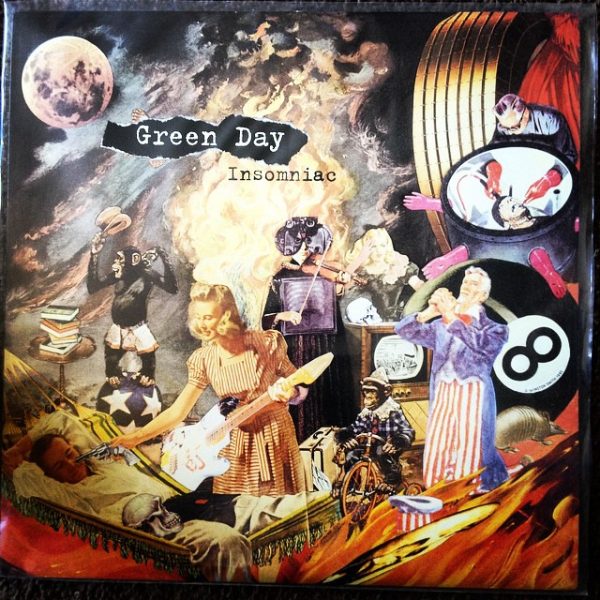
After “Dookie,” the band was, to put it lightly, not in the most rejuvenated phase of their career. The band’s sudden rise to fame and popularity and their touring for the album, coupled with the resentment and backlash they still received from older fans, seemed to affect their perception of themselves and their place in rock. The band’s fourth album, “Insomniac,” would allow for the band to vent these feelings of frustration and agitation. Though no clear changes to the band’s sound production-wise are made with this transition from “Dookie,” “Insomniac” takes a more dour tone. The zany, energetic, and somewhat carefree attitude of “Dookie” is replaced by the gloomy and even more self-deprecating tone of Insomniac. Where “Dookie” could relish in its angst and exhausted emotions, “Insomniac” feels more burdened and pained by its problems. Contributing to this tone is the fact that the lyrics often force the narrator to focus on their own personal state, and not necessarily place blame or anger onto other people. Opener “Armatage Shanks” introduces this theme immediately, and songs such as “No Pride,” “Panic Song,” and “Stuck With Me” further demonstrate this pessimistic and self-deprecating tone. Not to be forgotten, “Brain Stew,” possibly the most popular song from the album, remains true to this theme, especially as the song brings in ear-splitting and abrasive metallic guitar sounds to accompany Armstrong’s tired-sounding delivery as he laments about his suffering and boredom. “Insomniac,” though not reaching the commercial heights of “Dookie,” still sold well, charting at number 2 on the Billboard 200 and having currently sold over 2 million units. The project brought with it the singles “Geek Stink Breath,” “Brain Stew,” “Jaded,” and “Stuck With Me,” adding to Green Day’s well known song catalogue.

After the release of “Insomniac,” Green Day would begin another tour to promote the album, but would eventually cancel the European section of their tour partway through, likely due to exhaustion and burnout. If only there was a hint they weren’t doing well. The band would take a short break to spend time at home, relax, and reflect, after which they would begin work on their next album. Recorded in L.A. with Cavallo, “Nimrod” would be released in 1997. An intention behind “Nimrod” was to show Green Day was capable beyond the confines of pop-punk, displaying Green Day as great musicians, not just great pop-punk rockers (Kerrang). As a result, “Nimrod” works slight experimentations and ventures into other rock sub genres into its typical pop-punk formula. The smooth surf rock track “Last Ride In” and the ska-punk song “King for a Day” are the most obvious instances. Nonetheless, there are still plenty of fast-paced punk and alternative rock tracks on the album, but with a more playful tone than “Insomniac.” The tracks “Nice Guys Finish Last” and “Platypus (I Hate You)” stand out as examples. However, this album also contains one of Green Day’s most well known songs from this period: “Good Riddance (Time of Your Life).” An acoustic ballad Billie Joe Armstrong had written before “Dookie” (but struggled to find the correct album to release it on until “Nimrod”), “Good Riddance” is another striking turn from Green Day’s formula, as the song is a noticeably slow, reflective, and level-headed ballad from a band that was typically anything but slow and level-headed. The string sections near the song’s end and Armstrong’s comparatively subdued delivery also work to accentuate this shift. “Good Riddance” became a huge hit for the band and one of their most popular songs, selling over 5 million copies in just the U.S., and demonstrating the band’s ambitions in a way that likely surprised even longtime fans. “Nimrod” itself, though not selling as well as “Dookie,” did sell better than “Insomniac” at the time, quickly selling over 2 million units in the U.S.
2000s/Renewed Commercial Success
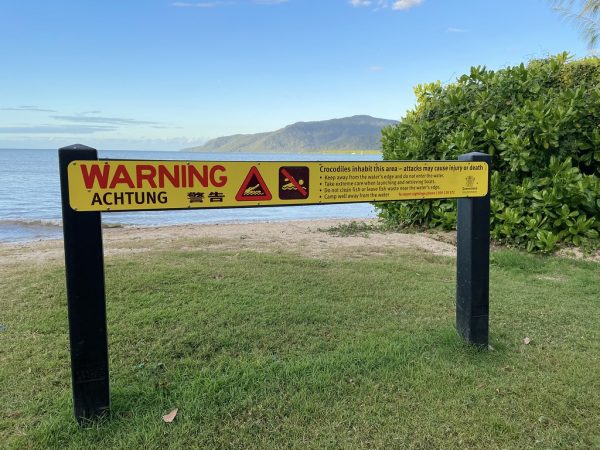
For their next album, Green Day would split with Cavallo, as both parties disagreed on the direction the next album would take. “Warning,” the band’s next album after “Nimrod,” would release in 2000. In part inspired by listens to Bob Dylan’s “Bringing It All Back Home,” “Warning” showed a notable change in sound from the band’s 90s output. Concentrated on comparatively slower alternative rock and folk-punk tracks, rather than the rapid and flashy hits they were known for, “Warning” sees the band continue the experimentation first demonstrated on “Nimrod,” but to a much larger degree. The band incorporates unusual instrumentation at points, such as the harmonica on “Hold On” and “Minority,” saxophone on others, and especially the Farfisa organ, mariachi bass, and strings on “Misery.” As mentioned, the speed of the album is also slowed comparatively, and is less aggressive in tone than much of the band’s previous work. At the time, “Warning” would be a commercial low point for the band, which could be attributed to different factors, including the declination in sales that had already been occurring since “Dookie,” changing times with alternative rock and nu metal on the rise, and the maturation of Green Day’s original fanbase. However, the album does remain a unique point in their discography worth checking out in my own opinion.
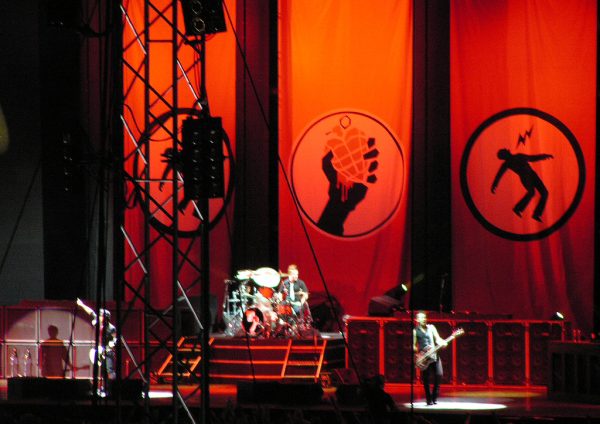
After “Warning,” the next album recorded by the band would be called “Cigarettes and Valentines,” meant to be their follow up to “Warning.” The project was recorded in 2003, but before the album could be released to the public, the master recordings were stolen. Nonetheless, rather than re-record the material, the band planned an entirely new project, with which they would reunite with Cavallo. This new album, titled “American Idiot,” would be released in 2004. The album was fairly popular, or in other words, sold millions of units and became the band’s second most popular album. To first talk about “American Idiot,” or at least two of its singles, the political climate at the time of its release is somewhat important. Around 2004, the Iraq War had been going on for only a year, under which the U.S. invaded Iraq while claiming the country was harboring “weapons of mass destruction.” However, this claim would be contested and later the war would eventually lose public support. The 9/11 attacks, which would also fuel public support for the war despite whether any real connection between them and Iraq, were only three years old as well. The title track, “American Idiot,” centers around a general feeling of confusion and paranoia present in the U.S. at the time, one the band claims to be fueled by mass media. “Holiday,” the other outwardly political song on the album, centers more directly on the Iraq War, as the band condemns use of mass media to worsen commonly spread lies surrounding the war and government support being thrown in support of the war. The rest of the album is not directly political, instead centering around the concept of a character, called Jesus of Suburbia, who escapes his suburban town in rebellion and goes off to the city. The other songs (with the exception of “Wake Me Up When September Ends”) on the album loosely tell this story, though they can be enjoyed on their own.
Sound-wise, “American Idiot” returns to the explosive and fast-paced punk rock that rose the band to fame, but with a more serious tone and theatric flare (the album would even be made into a Broadway play. Bring the family and make a trip out of it.). Unlike with “Nimrod” and “Warning,” the band does not deviate from their punk sound, even with ballads such as “Wake Me Up When September Ends” and “Whatsername” showing a more somber side of Green Day. However, the band does experiment with song structure, as some songs have multiple phases or transition easily into one another. Commercially, the album was a success, becoming multi-platinum and, as mentioned before, their second most popular album behind “Dookie.” Singles from the album such as “American Idiot,” “Holiday,” “Wake Me Up When September Ends,” and “Boulevard of Broken Dreams” would become well known and iconic songs from the band. Altogether, “American Idiot” was a major success for Green Day, reigniting their popularity at a later stage in their career.

After “American Idiot,” the band would take a long break before releasing another project, spending the time touring for American Idiot or working on new material and side projects. They would be faced with the task of following up the album that brought them back to commercial success and the public spotlight. In doing so, they would switch producers, exchanging Cavallo for Butch Vig (who produced albums such as “Nevermind” by Nirvana. A small underground record, perhaps you know of it.) The group’s final album of the 2000s, “21st Century Breakdown,” was released in 2009. “21st Century Breakdown,” though different in certain ways, retains similarities to “American Idiot.” The theatrical and straightforward rock style of “American Idiot” is still present, and the album also has a loose concept, this time surrounding the characters of Christian and Gloria as they navigate the 21st century. The band’s political critiques remain as well, as the lyrics paint a hopeless and almost apocalyptic picture of the new century, possibly further inspired by the Great Recession and continuing Iraq War. Themes of rebellion and revolution also accompany this lyrical focus. However, unlike the majority of “American Idiot,” “21st Century Breakdown” gives more opportunities for the band to slow down, as piano and acoustic guitar passages can be found throughout the album, and songs such as “Late Night on Earth,” “Restless Heart Syndrome,” and “21 Guns” are slower ballads. Commercially, though not to the extent of “American Idiot,” “21st Century Breakdown” was still a success for the band, hitting the top of the rock charts and eventually selling over a million units in the U.S.. “21 Guns” also has become another iconic song from the band, an anthemic ballad about the need to surrender when one has accomplished all they can. Though not the cultural highlight that “American Idiot” was, “21st Century Breakdown” was still a successful follow up for the band.
2010s/Accommodating the New Decade
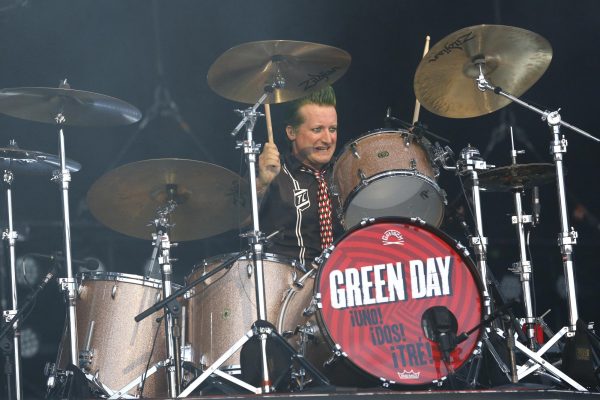
After the release of “21st Century Breakdown,” the band would enter the 2010s decade with the announcement of not one, not two, but three albums, which would release from September to December of 2012 as “¡Uno!,” “¡Dos!,” and “¡Tré!,” (the last title is a pun on the name of Green Day’s drummer, Tré Cool). The albums would also feature Jason White, who had been with the band as a guitarist on tour. With this trilogy, the band would reunite with Cavallo and deviate from the political and theatrical style of their last couple of albums, leaning towards a catchy, clean power-pop sound with lyrics more reminiscent of their “Dookie” and “Kerplunk!” days. Songs such as “Let Yourself Go” and “Lazy Bones” contain a teenage apathy and angst that some of the band’s classic songs focus on (even if my personal thoughts on many of the trilogy’s songs remain mixed.). However, songs such as “Brutal Love” and “The Forgotten” do bring back the balladry and more experimental musical composition of their 2000s decade. Notably, a lot of love songs, or songs focusing on love in a broken environment, make their way into the track lists of this trilogy, more so than on Green Day’s previous material. Commercially, the trilogy was not exactly the band’s highest selling point, but it does still mark an interesting point in their catalogue.
Notably, during the 2012 iHeart Radio music festival the year the trilogy was released, Armstrong would go on a furious rant near the end of their show, believing the band’s set was cut short after finding they had only one minute left. After yelling angrily about the situation, he would smash his guitar and walk off stage. After the incident, which was more than indicative of his declining mental health and drug and alcohol abuse at the time, the frontman would admit himself into rehab and remain sober for several years afterward. In 2015, Green Day would be inducted into the Rock & Roll Hall of Fame by pop-punk band Fall Out Boy, an encouraging display of the band’s accomplishments during their own career.

“Green Day Revolution Radio SBPA (38924272614).jpg” https://creativecommons.org/licenses/by-sa/2.0/
In 2016, Green Day would release their next album, one self-produced by the band, “Revolution Radio.” “Revolution Radio” would somewhat consist of a return to the sounds of “American Idiot” and “21st Century Breakdown,” a more grim tone coupled with lyrics centered around social and political violence, along with the sense of confusion hanging over the time period. The album leaves behind the more poppy stylings of the trilogy and returns to a more aggressive punk sound, with songs like “Bang Bang” and “Revolution Radio” bringing the rapid-fire pacing of their early days. More balladry can be found on opener “Somewhere Now” and closer “Ordinary World,” and the multi-phased track tradition continues on “Forever Now.” Regarding the songwriting, the band focuses on, as mentioned earlier, topics of social unrest, disillusionment with the current time period, and even gun violence with “Bang Bang,” as the band attempts to focus on issues that relate to the 2016 era. Though not hitting the commercial highs they once reached, “Revolution Radio” would still debut at #1 on the Billboard charts, their first since “21st Century Breakdown” to do so, indicating a greater performance than the “¡Uno!” trilogy.
2020s/Present Day
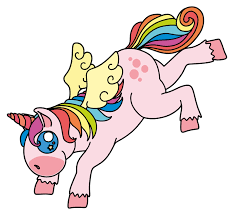
Soon before the COVID-19 pandemic would hit the U.S., Green Day would release their album “Father of All…,” an album which sounds unique to the rest of their discography. “Father of All…” finds the band mashing aspects of their 2010s albums together, with an immediate and catchy sound more reminiscent of their “¡Uno!” trilogy, but with more aggressive and pounding riffs similar to that of “Revolution Radio.” Garage rock elements are thrown into the mix as well. Nearly all of the album’s songs retain quick pop melodies, with each song running at slightly over the three minute mark at most and with a greater focus on catchy choruses than ever. Songs such as “I Was A Teenage Teenager” and “Graffitia” retain these melodies with a sense of balladry, while songs such as “Father of All…” and “Sugar Youth” use them in communicating youthful energy and exhilaration. Lyrically, the album takes on themes of hostility and frustration known to Green Day, but in a more carefree and sometimes even upbeat-sounding manner, with greater focus on high energy performances. Many songs also feature clap drumming and “woo” ing background vocals, production choices unique to this album, which add to its one-of-a-kind atmosphere. The album is also Green Day’s shortest, the finished product being only under half an hour. Commercially “Father of All…” would hit number 4 on the Billboard charts, but would garner a smaller amount of sales and streams. Still, like “Warning,” the album is an interesting part of their discography to look into.
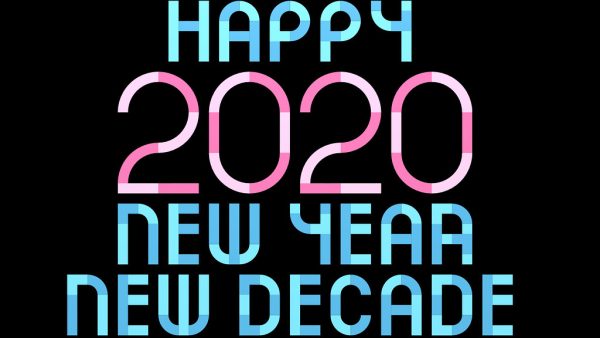
https://creativecommons.org/licenses/by-nc-sa/2.0/
In between “Father of All…” and Green Day’s next album, Armstrong would release an album of covers titled “No Fun Mondays,” and the band would go on tour with Fall Out Boy and Weezer during 2021 and 2022. As we near closer towards the present day, in January of 2024, Green Day released their most recent album as of now, “Saviors.” The album also has the band reuniting with Cavallo for the first time since the “¡Uno!” trilogy. “Saviors” takes a very similar approach to “Revolution Radio,” albeit with a less serious tone: a return to a harder punk sound with occasional focus on the current time period. Even on the slower songs, “Saviors” is filled with pummeling guitar riffs and percussion, and ever dramatic vocal performances from Armstrong. The album differentiates between topics and themes throughout as well. Songs such as “The American Dream Is Killing Me,” “Strange Days Are Here To Stay,” and “Living In the ’20s” reflect on the chaos and apparent changes present in the 2020s decade. Meanwhile, songs such as “Look Ma, No Brains!” and “1981” bring the speedy and tounge-in-cheek punk rock the band was known for, with these songs bringing a more unserious lyrical focus and harkening back of their “Dookie” period in style. Ballads such as “Suzie Chapstick” and “Father to a Son” add more depth to the album’s track list as well, and “Dilemma” remains an emotionally powerful highlight, with some of the most aggressive and comparatively abrasive riffs on the album and personal songwriting from Armstrong. Commercially, the album’s full impact remains to be seen, but “Saviors” did debut at #4 on Billboard and sell 49,000 album-equivalent units in the first week. With “Saviors,” we are now left at the present day with the band, as they gear up for “The Saviors Tour”.
Altogether, through their career, Green Day transformed from a small indie group into a powerful force in punk rock and rock music, broadening the horizons of their own genre and focusing more attention on punk music as a whole. The band’s impact cannot be understated, both from a commercial and from an artistic standpoint, and the band has since become a very recognizable name in rock. However, even with these major accomplishments the band has made, the more personal meaning their songs have on people and how people enjoy their music cannot be forgotten. As we look back on Green Day’s career, it is necessary to examine the importance they and their songs still hold for many people, including teenagers, in our own community today. As such, here are responses from students at our own Mentor High after being asked what they like about Green Day, as well as what their favorite songs are.
Student Thoughts
What do Mentor High School students think of this group? Here are some responses from fans:

Ryan Beucler (Grade 12): Green Day is amazing, “Give Me Novocaine” and “Wake Me Up When September Ends” are examples of beautiful songs on their timeless album “American Idiot.”

Grady Cole (Grade 11): I really like Green Day because of their ability to take a simple rock beat and turn it into something meaningful and beautiful. I particularly like “Give Me Novocaine” on their 2004 album “American Idiot.” It has an aggressive yet melodic sound to it. Slow and sweet to begin with but then rips into emotion with guitar riffs. Truly a masterpiece and one of the forgotten songs on that global hit album.
Natalie DePoy (11): Green Day is a grunge band which very accurately describes the teenage angst and overpowering emotions we all experience at some point. They help people especially teenagers feel like their frustrations and emotions in daily life are normal and they aren’t alone going through it. Regarding favorite songs, I love “Holiday,” “Boulevard of Broken Dreams,” and “Meet Me On the Roof.”
Ryan Olver (11): “Basket Case” is a musical masterpiece and a lyrical luxury of Green Day’s discography.
Kaitlyn Morris (11): “Sugar Youth” is a banger. The beat is a typical punk/rock feel with easy lyrics to remember and jam out to.
Marcello Ricci (11): If ever there was a Jesus of suburbia, it would be Billie Joe Armstrong.
Carl Gracie (11): I’ve loved Green Day for a long tim; it’s been one of my favorites since I was little. As I grew up, their lyrics made more of an impact, both about things I’d been forming an opinion on like political issues and things I’d never heard talked about openly like unhealthy/abusive relationships. Both of these topics, although talked about more, have been seen as taboo to speak on. People tend to feel ashamed or nervous to speak up about them in fear of being scrutinized. Two of my favorite songs, “Coming Clean” and “Reject,” were both songs that I felt signified finding out who I was, the fact that it’s ok to be honest about who I am and be true to it no matter what people say. In all honesty that’s what Green Day itself is about, being true to you and being vocal about it and not letting people’s opinions stand in the way. Their music helped me understand the importance of self expression and confidence in who I am.

